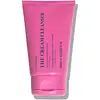What's inside
What's inside
 Key Ingredients
Key Ingredients

 Benefits
Benefits

 Concerns
Concerns

 Ingredients Side-by-side
Ingredients Side-by-side

Water
Skin ConditioningCaprylic/Capric Triglyceride
MaskingSimmondsia Chinensis Seed Oil
EmollientSqualane
EmollientPropanediol
SolventGlycerin
HumectantGlyceryl Stearate
EmollientPEG-100 Stearate
Cetearyl Alcohol
EmollientPhenoxyethanol
PreservativeJojoba Oil/Macadamia Seed Oil Esters
Skin ConditioningBetaine
HumectantCarbomer
Emulsion StabilisingHydroxyacetophenone
Antioxidant1,2-Hexanediol
Skin ConditioningCaprylyl Glycol
EmollientParfum
MaskingSodium PCA
HumectantSodium Hydroxide
BufferingXanthan Gum
EmulsifyingTetrasodium Glutamate Diacetate
Squalene
EmollientEthylhexylglycerin
Skin ConditioningSodium Lactate
BufferingHelianthus Annuus Seed Oil
EmollientPCA
HumectantCitric Acid
BufferingBiosaccharide Gum-1
HumectantSerine
MaskingAlanine
MaskingPhytosteryl Macadamiate
Skin ConditioningGlycine
BufferingGlutamic Acid
HumectantRosmarinus Officinalis Leaf Extract
AntimicrobialGlycine Hcl
BufferingThreonine
Arginine
MaskingPhytosterols
Skin ConditioningTocopherol
AntioxidantProline
Skin ConditioningTrisodium EDTA
Water, Caprylic/Capric Triglyceride, Simmondsia Chinensis Seed Oil, Squalane, Propanediol, Glycerin, Glyceryl Stearate, PEG-100 Stearate, Cetearyl Alcohol, Phenoxyethanol, Jojoba Oil/Macadamia Seed Oil Esters, Betaine, Carbomer, Hydroxyacetophenone, 1,2-Hexanediol, Caprylyl Glycol, Parfum, Sodium PCA, Sodium Hydroxide, Xanthan Gum, Tetrasodium Glutamate Diacetate, Squalene, Ethylhexylglycerin, Sodium Lactate, Helianthus Annuus Seed Oil, PCA, Citric Acid, Biosaccharide Gum-1, Serine, Alanine, Phytosteryl Macadamiate, Glycine, Glutamic Acid, Rosmarinus Officinalis Leaf Extract, Glycine Hcl, Threonine, Arginine, Phytosterols, Tocopherol, Proline, Trisodium EDTA
 Reviews
Reviews

Ingredients Explained
These ingredients are found in both products.
Ingredients higher up in an ingredient list are typically present in a larger amount.
Citric Acid is an alpha hydroxy acid (AHA) naturally found in citrus fruits like oranges, lemons, and limes.
Like other AHAs, citric acid can exfoliate skin by breaking down the bonds that hold dead skin cells together. This helps reveal smoother and brighter skin underneath.
However, this exfoliating effect only happens at high concentrations (20%) which can be hard to find in cosmetic products.
Due to this, citric acid is usually included in small amounts as a pH adjuster. This helps keep products slightly more acidic and compatible with skin's natural pH.
In skincare formulas, citric acid can:
While it can provide some skin benefits, research shows lactic acid and glycolic acid are generally more effective and less irritating exfoliants.
Most citric acid used in skincare today is made by fermenting sugars (usually from molasses). This synthetic version is identical to the natural citrus form but easier to stabilize and use in formulations.
Read more about some other popular AHA's here:
Learn more about Citric AcidPhenoxyethanol is a preservative that has germicide, antimicrobial, and aromatic properties. Studies show that phenoxyethanol can prevent microbial growth. By itself, it has a scent that is similar to that of a rose.
It's often used in formulations along with Caprylyl Glycol to preserve the shelf life of products.
Water. It's the most common cosmetic ingredient of all. You'll usually see it at the top of ingredient lists, meaning that it makes up the largest part of the product.
So why is it so popular? Water most often acts as a solvent - this means that it helps dissolve other ingredients into the formulation.
You'll also recognize water as that liquid we all need to stay alive. If you see this, drink a glass of water. Stay hydrated!
Learn more about Water